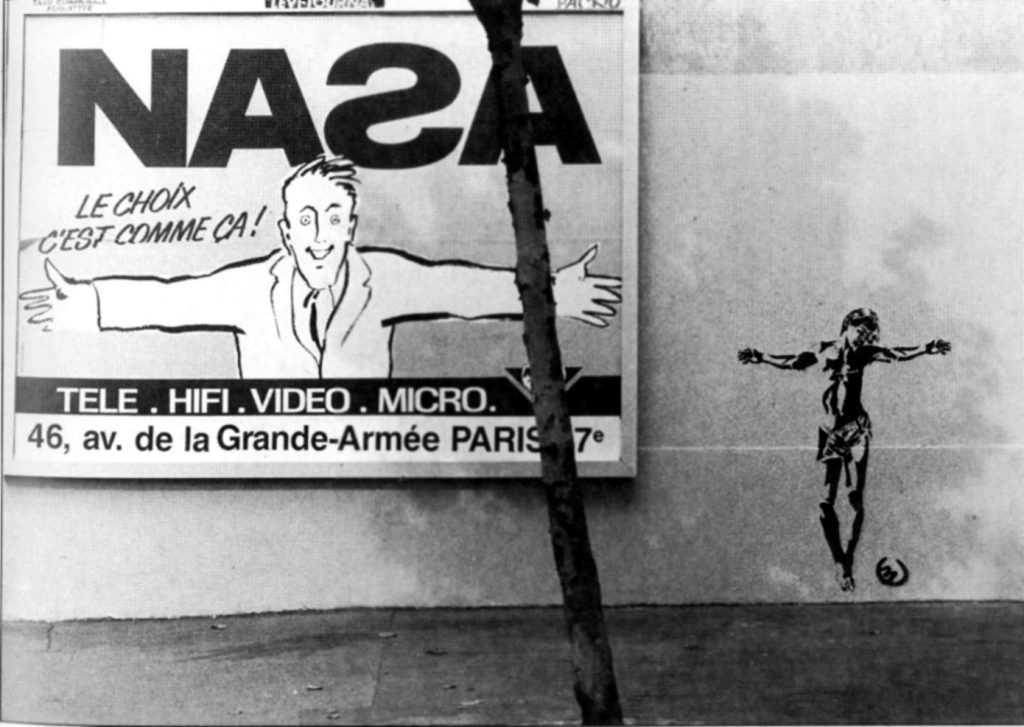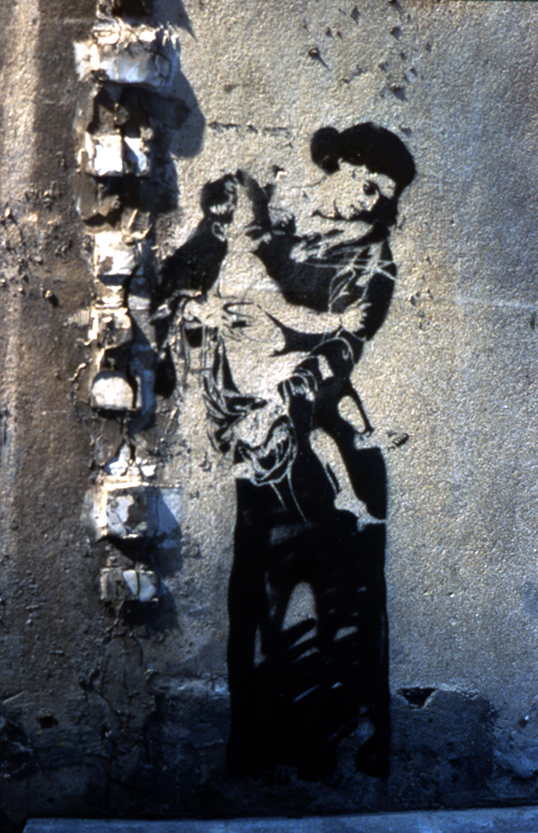Blek le Rat is a French graffiti artist who is widely considered to be one of the pioneers of stencil graffiti. His work has influenced the street art movement. Often regarded as the godfather of stencil art, Blek le Rat’s contributions to the art form are revolutionary.
Born Xavier Prou in Boulogne-Billancourt, Paris (1951), Blek le Rat began his artistic journey in the early 1980s when he decided to take his art to the streets of Paris. Armed with a stencil and a spray can, Blek began creating intricate and thought-provoking artworks that would inspire generations of artists. Over the years, Blek’s work has evolved to encompass various themes, from political and social commentary to pop culture and everyday life. His unwavering commitment to the cause of making art accessible to the masses has earned him a rightful place in the pantheon of street art legends.
In this editorial, we delve into ten fascinating facts about Blek le Rat’s life and art, shedding light on the man behind the iconic stencils. From his early beginnings in the streets of Paris to his global recognition as the Godfather of Stencil Graffiti.
1.
Blek le Roc
Blek le Rat is a pioneering graffiti artist and a trailblazer in the Parisian street art scene during the 1980s and was one of the first to use stencils as a technique. His moniker “Blek le Rat” was a nod to an Italian comic book called Blek le Roc that he enjoyed reading during childhood.

Blek le Rat, Running Man in Paris 1984. Image copyright Blek le Rat
2.
Graffiti NYC
In 1971, while travelling to the United States, Blek le Rat stumbled upon the first wildstyle graffiti in New York City. The bold and intricate style of graffiti caught his eye and left a lasting impression on him, intriguing and impressing him deeply.

Blek le Rat, Christ in Miami 2009. Image copyright Blek le Rat
3.
David Hockney
Blek le Rat was considerably impacted by the works of David Hockney, a renowned British painter. Hockney’s significant exhibition held in close proximity to the Ecole des Beaux Arts in Paris left a lasting impression on Blek le Rat’s artistic style.

Blek le Rat, Christ in Paris 1986. Image copyright Blek le Rat
4.
Le Rat
Blek le Rat honed his artistic skills during the 1970s by studying fine arts and architecture at the Ecole des Beaux-Arts in Paris. His training proved invaluable in his later work on the streets. When he started painting in public spaces in 1981, he opted for a stencil technique with a more Latin flair, which he believed was better suited to the architecture of Paris. One of his signature motifs was stencils of rats painted on Parisian walls in 1981, which he saw as a symbol of freedom and rebellion and one that “spreads the plague everywhere, just like street art.”

Blek le Rat, RAT 1982. Image copyright Blek le Rat
5.
The Old Man
Blek le Rat is widely recognised as the progenitor of the stencil art movement, transforming it from a basic form of lettering to a genre of pictorial art. He achieved this by creating his first life-size stencil, which featured a photograph of an elderly Irish man wearing a cap that he had clipped from the newspaper Libération. The stencil quickly became a sensation, adorning walls across France and capturing the attention of both the public and photojournalists, who eagerly documented each new installation. This achievement marked a turning point in the history of street art, and Blek le Rat’s pioneering work continues to inspire and influence artists around the world today.

Blek le Rat, Old Man in Paris 1984. Image copyright Blek le Rat
6.
Characters
Blek le Rat’s oeuvre frequently portrays figures in urban spaces, such as women, children, elderly individuals, and various modern archetypes, often depicted in isolation.

Blek le Rat, Running Man in Paris 1983. Image copyright Blek le Rat
7.
Street Museums
Blek le Rat draws inspiration from the works of some of the greatest artists in history, such as Caravaggio, Michelangelo, Reni, and Leonardo da Vinci. His motive is to take the characters out of museums and galleries, and bring them back to the public, on the city streets. In 2012, a 1991 replica of Caravaggio’s Madonna di Loreta was discovered behind posters on a house wall in Leipzig, Germany. This was Blek’s oldest preserved street art graffiti, which he dedicated to his future wife Sybille.

Blek le Rat, Madonna in Leipzig 1991. Image copyright Blek le Rat
8.
The Law
Blek le Rat had a brush with the law in his early days. While working on a piece in Les Halles, he was arrested for damaging public property. However, luck was on his side as the detective who interrogated him was a fan of comic books and decided not to report the incident to the prosecutor. Later, in 1991, Blek le Rat was summoned to appear before the court in Paris for the same offense of damaging property, but this time he was caught red-handed while stenciling the Madonna stencil in Paris. Surprisingly, the presiding judge admired his work and chose not to convict him. After this incident, Blek le Rat started working exclusively with pre-stenciled posters. He found that this medium allowed for faster wall application and reduced the risk of being caught in the act.

Blek le Rat, Madonna in Paris 1991. Image copyright Blek le Rat
9.
Social Statement
During the mid-2000s, Blek le Rat’s artistic expression took on a more political dimension as he sought to utilise his art as a tool for social commentary. In a bid to garner support from media and political actors, he plastered numerous posters with the image of journalist Florence Aubenas, who had been kidnapped in Iraq. He also began a series of works highlighting the global issue of homelessness in 2006. These pieces featured depictions of homeless individuals standing, sitting or lying on sidewalks to draw attention to the plight of the homeless and provoke thought on the issue.

Blek le Rat, Beggar in Paris 2005. Image copyright Blek le Rat
10.
Banksy
Banksy once made a remark that shed light on the influence of Blek le Rat, known as the Godfather of stencil graffiti.
“Every time I think I’ve painted something slightly original, I find out that Blek le Rat has done it as well. Only twenty years earlier.”
Banksy
This statement highlights that Blek le Rat’s work, which began in the early 1980s, was ahead of its time and paved the way for the later development of stencil graffiti. Banksy’s admiration for Blek le Rat’s artistry is a testament to the impact that Blek le Rat had on the street art movement.

Image copyright Banksy
Blek le Rat is an iconic figure in the world of street art. His pioneering work in the stencil movement and his commitment to social causes have inspired countless young artists around the world. His desire to bring art to the people and make it a part of their everyday lives is a testament to his belief that art should not be confined to galleries and museums. Blek’s legacy will continue to shape the street art scene for years to come, and his influence will be felt for generations.
Please view our collection of Blek le Rat artworks in store here.